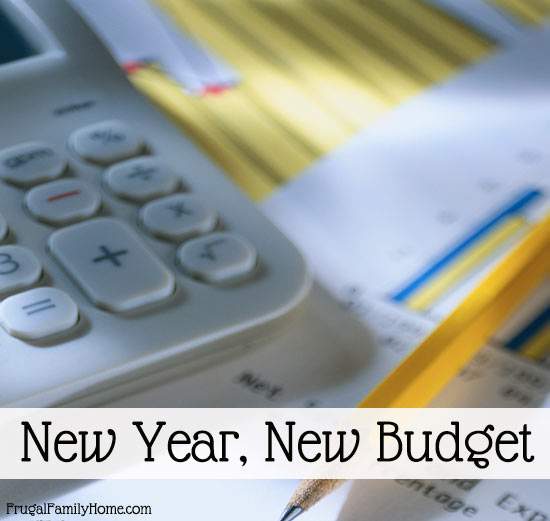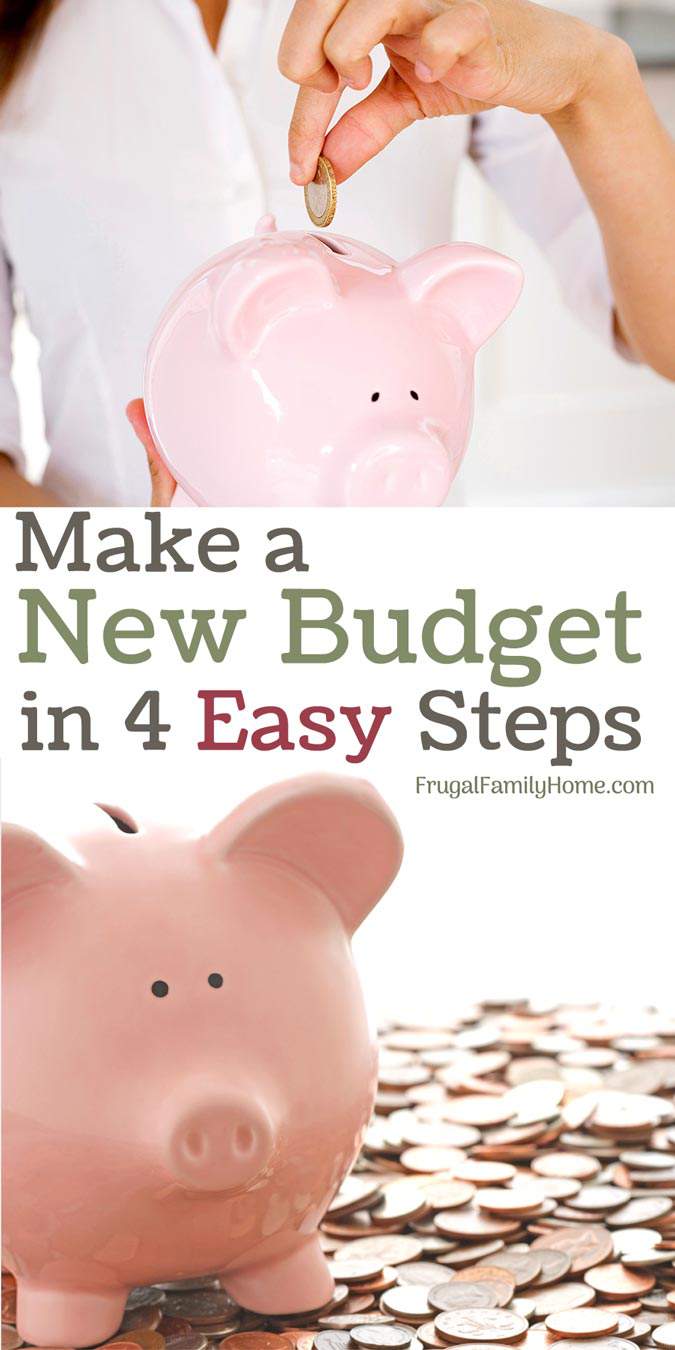New Year, New Budget
With the start of a new year comes the promise of new and great things. If one of your goals is to get your finances in order, then the new year is a great time to start.
But it can be hard to change our old spending habits and get onto a new track, towards financial freedom. But it’s not impossible to do especially if you have a budget.

A budget can help you stay on track with your financial goals. Be sure to make a written budget whether it be on paper or on the computer, it needs to be written down.
So how do you make a budget for the first time or start a budget after letting budgeting go for a while? With these 4 easy steps, you can have your budget set up in no time.
4 Easy Steps to Setting Up a Budget
1. Determine Your Income
First, you need to know how much you have coming in. If you don’t have a good idea of how much money you have coming into your bank account each month, you won’t know how much you have to spend. Knowledge is power.
Find your last few paycheck stubs, look them over, see how much money you have coming in each month. If your pay varies from month to month, you can take the smallest amount made in the last few months as your pay for each month.
2. Determine your Outgoing
This job may be tougher than finding your income. It may be best to get out your bank statement, checkbook, credit card statements (if you use one) and any recent receipts you can find. Start by writing down the bills you pay monthly and bi-monthly.
Those should be easy to find in your checkbook or on your bank statement. Then add in your other monthly outgoing expenses such as groceries, eating out, spending and any reoccurring monthly expenses. That should get you a fairly good idea of your spending each month.
3. The Bottom Line
Once you have your income and your outgoing expenses, it’s time to subtract.
Subtract your outgoing expenses from your income. Hopefully, your bottom line falls in the positive side. Meaning you have more income than outgoing expenses. If you have more outgoing than income you will need to adjust your spending to be more in line with your income.
4. Spending Adjustment
Are you spending more than you are bringing in each month? If this is the case you will need to decide what items you will give up to bring your budget into balance.
Can you give up purchasing coffee out and make it at home yourself? Can you eat at home more and eat out less? Can you make more frugal meals to help cut your grocery spending? Can you turn off lights in rooms you are not in to save on the electric bill? What about turning the furnace down a degree and save on the heating bill?
By doing just one or two of the items listed above you can save some money each month. Next time, I will be talking about small changes that can help you stay within your budget. Until then, here are a few questions to ponder,
How are you doing financially? Are you in the black each month or running in the red? What changes can you make to improve your financial outlook?
Have you had a budgeting success recently? I would love to hear about it in the comments below.
[signoff]
Pin it for Later,
Need more budgeting help? Check out my budget page for my budgeting series and more.


We’ve been using the EveryDollar budgeting tool for a few months, and it’s really been helpful. I like that I can have our budget right on my phone so that I can check it at anytime, even when I’m not home. It’s also easy to adjust anything, because it automatically recalculates the budget for us.
Erin, I’m glad to hear you like the EveryDollar budgeting tool. I tried it but I didn’t really like it. I think I didn’t like it because I use an Excel spreadsheet and I prefer it. The automatic recalculation is nice to have if you need to adjust an amount of an item. I’m glad you’ve found a budgeting tool that is really helpful for you.